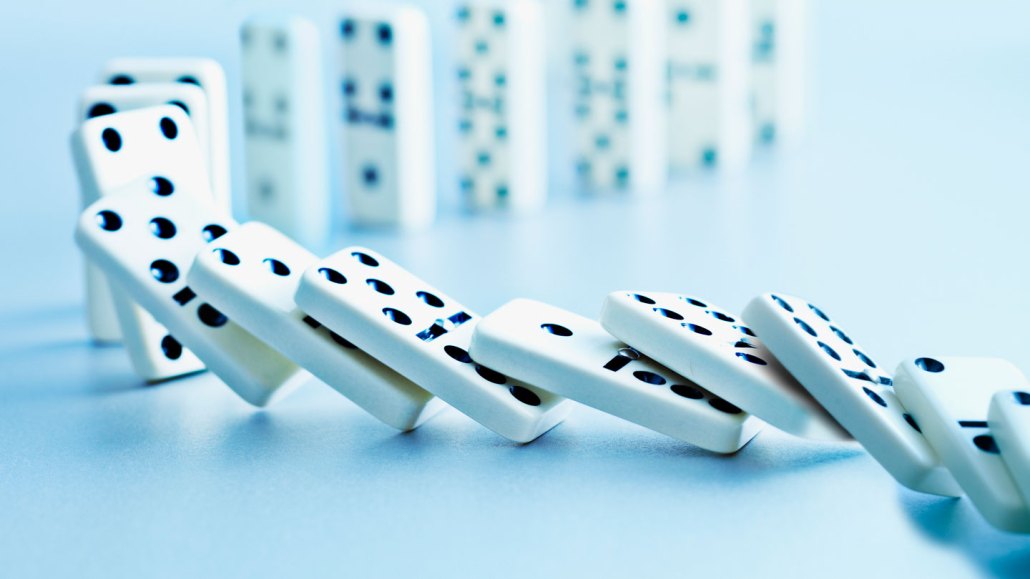
A line of dominoes standing on end collapses in a chain reaction after the first one is knocked over. Computer simulations reveal that friction plays an important role in determining how fast the toppling cascades.
Martin Barraud/OJO Images/Getty Images Plus







